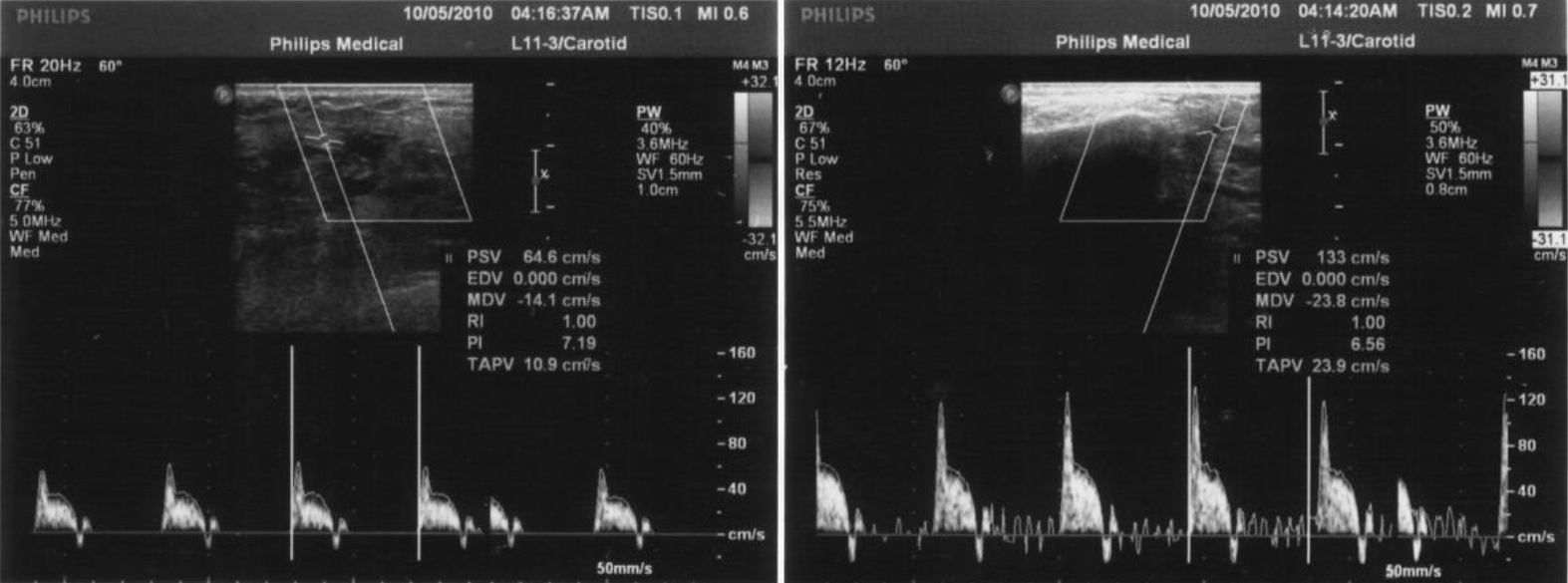Lots of interesting abstracts and cases were submitted for TCTAP 2023. Below are the accepted ones after a thorough review by our official reviewers. Don’t miss the opportunity to expand your knowledge and interact with authors as well as virtual participants by sharing your opinion in the comment section!
TCTAP A-064
Changes in the Artery Submentalis in Patients With Stenosis of the Carotids
By Nataliya Makusheva, Sergey Chuykin, Vladimir Plechev
Presenter
Nataliya Makusheva
Authors
Nataliya Makusheva1, Sergey Chuykin1, Vladimir Plechev1
Affiliation
Bashkir State Medical University, Russian Federation1
View Study Report
TCTAP A-064
Imaging: Non-Invasive
Changes in the Artery Submentalis in Patients With Stenosis of the Carotids
Nataliya Makusheva1, Sergey Chuykin1, Vladimir Plechev1
Bashkir State Medical University, Russian Federation1
Background
The research was done with the aim to determine pathological changes in a. submentalis in patients with stenosis of the external, common or bifurcation zone of carotids. The study included 127 female and male patients aged 50 to 65 years. The patients were divided into 2 groups - 69 and 58 patients with stenosis of the carotids, and without stenosis of carotids, but with atherosclerosis respectively. To determine the pathology of blood flow to the organs of the oral cavity, we performed ultrasonic duplex scanning of the a. submentalis from left and right. The research revealed: In the first group (with stenosis of the carotid arteries), the average value of the Gosling (PI) index was about 0.711 ± 0.41 on the right, and 0.69 ± 0.42 on the left. The Purselo (RI) index was 2.73 ± 0.28 on the right and 2.69 ± 0,36 on the right. The average Gossling index on the right in patients of the second group was 4.73 ± 0.50 on the right, 3.54 ± 0.38 on the left, 0.95 ± 0.02 on the right Purselo index, 0.93 ± 0.01 on the left, which differs significantly from the average values of these indicators in practically healthy people. Thus, an increase in the peripheral resistance to blood flow and a decrease in the elastic properties of the vascular membrane are noted.


Methods
The study included 127 female and male patients aged 50 to 65 years. The average age of patients is 57.8 ± 0.87 years. We conducted a study of the dental status of patients in the control group — group 1 (without atherosclerosis) and group 2 — with atherosclerosis of the external or common carotids.
The first group (control) included 69 patients - the average age is 57.5 ± 0.71 years. Of these, 31 were men — the average age was 57.84 ± 0.78 years and 38 women — the average age was 57.23 ± 1.13 years. The second group included 58 patients with atherosclerotic stenosis of the external carotid artery, area of carotid bifurcation or common carotids at the age of 58.28 ± 0.72 years. Of these, 48 men aged 57.95 ± 0.69 and 10 women aged 59.84 ± 2.56 years.
To study the degree of stenosis of the carotids, we performed angiography and ultrasound duplex scanning (Republican Cardiology Dispensary, Ufa).
To determine the pathology of blood flow to the organs of the oral cavity, we performed ultrasonic duplex scanning of the a. submentalis from left and right fig 1.).
The first group (control) included 69 patients - the average age is 57.5 ± 0.71 years. Of these, 31 were men — the average age was 57.84 ± 0.78 years and 38 women — the average age was 57.23 ± 1.13 years. The second group included 58 patients with atherosclerotic stenosis of the external carotid artery, area of carotid bifurcation or common carotids at the age of 58.28 ± 0.72 years. Of these, 48 men aged 57.95 ± 0.69 and 10 women aged 59.84 ± 2.56 years.
To study the degree of stenosis of the carotids, we performed angiography and ultrasound duplex scanning (Republican Cardiology Dispensary, Ufa).
To determine the pathology of blood flow to the organs of the oral cavity, we performed ultrasonic duplex scanning of the a. submentalis from left and right fig 1.).
Results
In the first group (with stenosis of the carotid arteries), the average value of the Gosling (PI) index was about 0.711 ± 0.41 on the right, and 0.69 ± 0.42 on the left. The Purselo (RI) index was 2.73 ± 0.28 on the right and 2.69 ± 0,36 on the right. The average Gossling index on the right in patients of the second group was 4.73 ± 0.50 on the right, 3.54 ± 0.38 on the left, 0.95 ± 0.02 on the right Purselo index, 0.93 ± 0.01 on the left, which differs significantly from the average values of these indicators in practically healthy people. Thus, when performing ultrasonic duplex scanning of the a. submentalis in patients with atherosclerosis of the common or external carotids, an increase in the peripheral resistance to blood flow and a decrease in the elastic properties of the vascular membrane are noted.


Conclusion
Thus, when comparing groups of patients without atherosclerotic stenosis (group 1) and with atherosclerotic stenosis of the common or external carotid arteries (group 2), values of the Purselo and Gosling indices were higher in the second group than in the first group. This indicates a valid effect of narrowing of the carotids on trophic organs of the oral cavity. Stenosis of the carotids affect the blood supply of the tissues of the oral cavity, causing their ischemia


